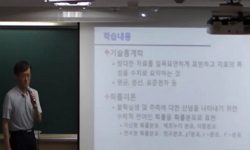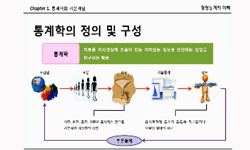The Yellow Sea Warm Current (YSWC) and the Yellow Sea Cold Bottom Water (YSCBW) are two protruding features, which have strong influence on the community structure and distribution of zooplankton in the Yellow Sea. Both of them are seasonal phenomena....
http://chineseinput.net/에서 pinyin(병음)방식으로 중국어를 변환할 수 있습니다.
변환된 중국어를 복사하여 사용하시면 됩니다.
- 中文 을 입력하시려면 zhongwen을 입력하시고 space를누르시면됩니다.
- 北京 을 입력하시려면 beijing을 입력하시고 space를 누르시면 됩니다.
The Yellow Sea Warm Current and the Yellow Sea Cold Bottom Water, Their Impact on the Distribution of Zooplankton in the Southern Yellow Sea
한글로보기https://www.riss.kr/link?id=A100669382
- 저자
- 발행기관
- 학술지명
- 권호사항
-
발행연도
2004
-
작성언어
English
- 주제어
-
자료형태
학술저널
-
수록면
1-13(13쪽)
- 제공처
-
0
상세조회 -
0
다운로드
부가정보
다국어 초록 (Multilingual Abstract)
The Yellow Sea Warm Current (YSWC) and the Yellow Sea Cold Bottom Water (YSCBW) are two protruding features, which have strong influence on the community structure and distribution of zooplankton in the Yellow Sea. Both of them are seasonal phenomena. In winter, strong north wind drives southward flow at the surface along both Chinese and Korean coasts, which is compensated by a northward flow along the Yellow Sea Trough. That is the YSWC. It advects warmer and saltier water from the East China Sea into the southern Yellow Sea and changes the zooplankton community structure greatly in winter. During a cruise after onset of the winter monsoon in November 2001 in the southern Yellow Sea, 71 zooplankton species were identified, among which 39 species were tropical, accounting for 54.9 %, much more than those found in summer. Many of them were typical for Kuroshio water, e.g. Eucalanus subtenuis, Rhincalanus cornutus, Pareuchaeta russelli, Lucicutia flavicornis, and Euphausia diomedeae etc. 26 species were warm-temperate accounting for 36.6% and 6 temperate 8.5%. The distribution pattern of the warm water species clearly showed the impact of the YSWC and demonstrated that the intrusion of warmer and saltier water happened beneath the surface northwards along the Yellow Sea Trough. The YSCBW is a bottom pool of the remnant Yellow Sea Winter Water resulting from summer stratification and occupy most of the deep area of the Yellow Sea. The temperature of YSCBW temperature remains ${\leq}{\;}10^{\circ}C$ in mid-summer. It is served as an oversummering site for many temperate species, like Calanus sinicus and Euphaisia pacifica. Calanus sinicus is a dominant copepod in the Yellow Sea and East China Sea and can be found throughout the year with the year maximum in May to June. In summer it disappears in the coastal area and in the upper layer of central area due to the high temperature and shrinks its distribution into YSCBW.
동일학술지(권/호) 다른 논문
-
- The Korean Society of Oceanography
- Kim, Chang-S.
- 2004
-
Measuring and Modeling the Spectral Attenuation of Light in the Yellow Sea
- The Korean Society of Oceanography
- Gallegos, Sonia-C.
- 2004
-
- The Korean Society of Oceanography
- Hayashi, Mitsuru
- 2004
-
Apparent Dominance of Regenerated Primary Production in the Yellow Sea
- The Korean Society of Oceanography
- Park, Myung-G.
- 2004




 ScienceON
ScienceON






